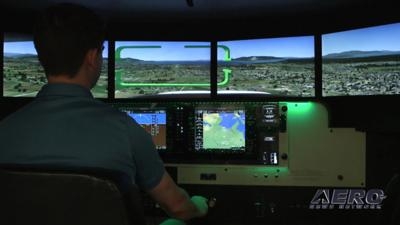Sat, Jun 30, 2018
Rule Goes Into Effect July 27
The FAA has published a rule in the Federal Register laying out new guidelines for the use of "aviation training devices" for flight training.

According to the published rule, use of these training devices has proven to be an effective, safe, and affordable means of obtaining pilot experience. This rulemaking also addresses changing technologies by accommodating the use of technically advanced airplanes as an alternative to the use of older complex single engine airplanes for the commercial pilot training and testing requirements.
Additionally, this rulemaking broadens the opportunities for military instructor pilots or pilot examiners to obtain civilian ratings based on military experience, expands opportunities for logging pilot time, and removes a burden from sport pilot instructors by permitting them to serve as safety pilots. Finally, this rulemaking includes changes to some of the provisions established in an August 2009 final rule.
These actions are necessary to bring the regulations in line with current needs and activities of the general aviation training community and pilots.
This final rule amends the regulations governing the use of aviation training devices (ATDs). As stated in the NPRM, the FAA approves ATDs for use in pilot certification training. Title 14 of the Code of Federal Regulations (14 CFR) part 60 governs the qualification of flight simulation training devices (FSTD), which include full flight simulators (FFSs) levels A through D and flight training devices (FTDs) levels 4 through 7.
Under the final rule, the FAA is:
- Adding a definition of ATD in § 61.1;
- removing the requirement for an instructor to be present when a pilot accomplishes his or her instrument recency in an FFS, FTD, or ATD; and
- amending the regulations to allow pilots to accomplish instrument recency experience in ATDs at the same interval allowed for FFSs and FTDs.
The rule becomes effective July 27, 2018. There are extensive details about the new rules provided at the FMI link below.
(Source: Federal Register. Image from file)
More News
Its Offerings Are Lighter, Cleaner, and Now Pushing Past 1,000nm on SAF Jet Fuel DeltaHawk’s diesel-powered aircraft lineup has seen incredible upgrades over the last few yea>[...]
The Airplane Experienced A Total Loss Of Engine Power On December 3, 2025, about 1600 central standard time, a Mooney Aircraft Corp. M20K, N57229, was substantially damaged when it>[...]
Make Sure You NEVER Miss A New Story From Aero-News Network Do you ever feel like you never see posts from a certain person or page on Facebook or Instagram? Here’s how you c>[...]
Aero Linx: European Society of Aerospace Medicine (ESAM) As a pan-European, independent forum, it works to promote the safety and health of all persons involved in aviation and spa>[...]
“We are excited to see Wisk achieve this milestone, and I’m so proud of the team that made it possible. The team at Wisk has built advanced technologies across flight c>[...]
 Aero-TV: DeltaHawks Diesel Power Steps Into the Spotlight
Aero-TV: DeltaHawks Diesel Power Steps Into the Spotlight NTSB Prelim: Mooney Aircraft Corp. M20K
NTSB Prelim: Mooney Aircraft Corp. M20K ANN FAQ: Turn On Post Notifications
ANN FAQ: Turn On Post Notifications ANN's Daily Aero-Linx (12.20.25)
ANN's Daily Aero-Linx (12.20.25) Aero-News: Quote of the Day (12.20.25)
Aero-News: Quote of the Day (12.20.25)



